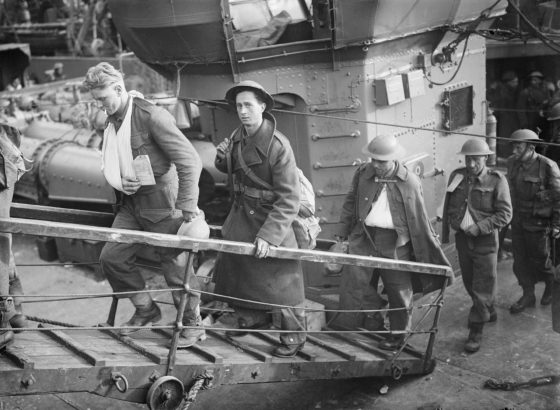
“The American triumph at Saratoga was considered the turning point of the eight-year War of Independence.”
By Sean Kelleher
MOST PEOPLE REMEMBER the first Thanksgiving being held by pilgrims at Plymouth in what is now Massachusetts in the year 1621. According to the story, the English colonists feasted for three days in the autumn of that year to celebrate their first harvest in the new world.
America’s first national Thanksgiving holiday however came more than 150 years later. It was declared by the Continental Congress to commemorate the victory of the American army of General Horatio Gates over British forces commanded by General John Burgoyne at Saratoga, New York on Oct. 17, 1777.

A National Celebration
Following the campaign, Congress declared Thursday, Dec. 18 “a day of Thanksgiving” to God. The legislators proclaimed the holiday so that “with one heart and one voice the good people may express the grateful feelings of their hearts, and consecrate themselves to the service of their divine benefactor.”
The American triumph at Saratoga was considered the turning point of the eight-year War of Independence. It was the first time in history that an entire British army had been captured. What’s more, the victory reversed a long string of humiliating setbacks for the 13 rebellious colonies, including the loss of the American capital in Philadelphia.
Benjamin Franklin, who was in France in 1777 lobbying Versailles to enter the war on America’s side, leveraged Saratoga to convince King Louis XVI to join a Franco-American alliance. With French, and later even Spanish and Dutch support, the Revolution widened from a small regional conflict to a bona fide global war, one that challenged England’s status as an economic and military world power.
Congress responded to the news of the Saratoga victory by appointing a committee consisting of Samuel Adams of Massachusetts, Richard Henry Lee of Virginia and Daniel Roberdeau of Pennsylvania to draft a report and resolution. The motion, which was adopted Nov. 1, declared Thursday, Dec. 18 as day of thanksgiving.

“Our Grateful Acknowledgements”
General George Washington issued orders for the holiday to be observed by the Continental Army. He wrote:
“Being the day set apart by the Honorable Congress for public Thanksgiving and Praise; and duty calling us devoutly to express our grateful acknowledgements to God for the manifold blessings he has granted us, the General directs that the army remain in its present quarters, and that the Chaplains perform divine service with their several Corps and brigades. And earnestly exhorts, all officers and soldiers, whose absence is not indispensably necessary, to attend with reverence the solemnities of the day.”

No Turkey for the Troops
An accurate account of how the hungry and ill-equipped Continental soldiers spent America’s first national Thanksgiving holiday can be found in the memoirs of Private Joseph Plumb Martin:
“Well to add something extraordinary to our present stock of provisions – our country, ever mindful of its suffering army, opened her sympathizing heart so wide, upon this occasion as to give us something to make the world stare… a half gill of rice and a table spoon full of vinegar!”
The following day, Washington marched his victorious army into winter quarters at Valley Forge, Pennsylvania. “We have experienced little less than a famine in camp,” recalled one member of the army.
More than 2,000 died of starvation, disease and exposure before the winter ended.
Sean Kelleher is the municipal Historian in the Town of Saratoga, New York and has a blog historianatsaratoga.wordpress.com dedicated to community history. He was a member of the New York State French and Indian War 250th Anniversary Commemoration Commission. You can follow him on twitter @historysaratoga.










https://pacificparatrooper.files.wordpress.com/2019/11/2019-happy-thanksgiving-turkey-animation.gif